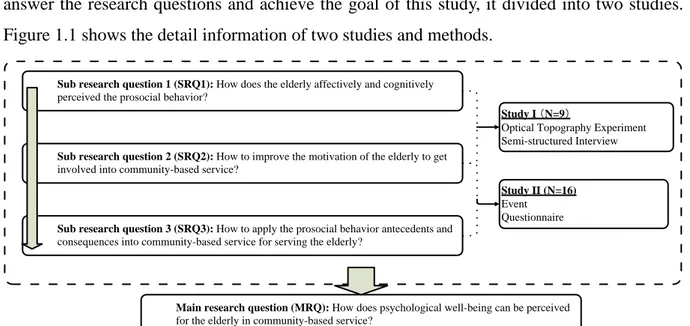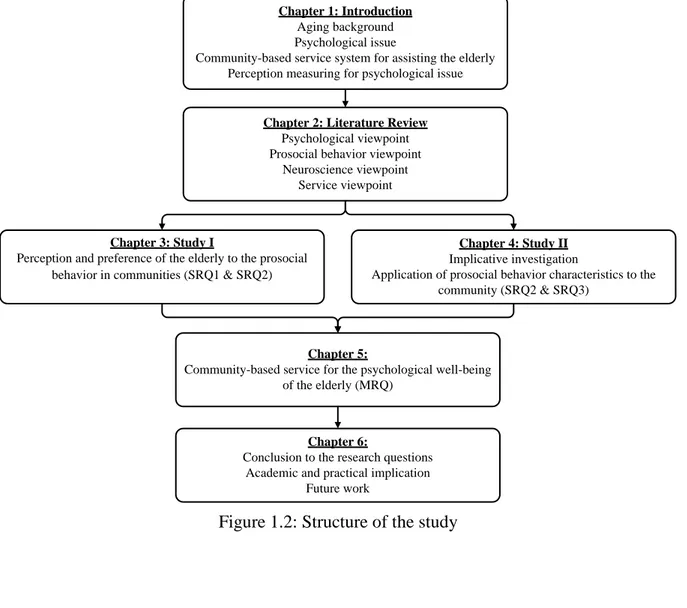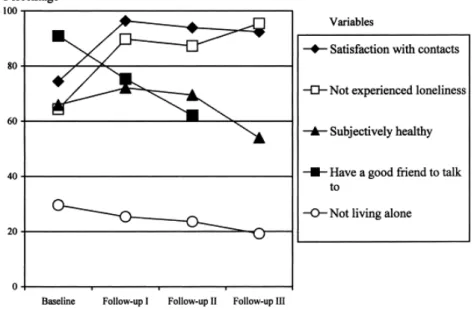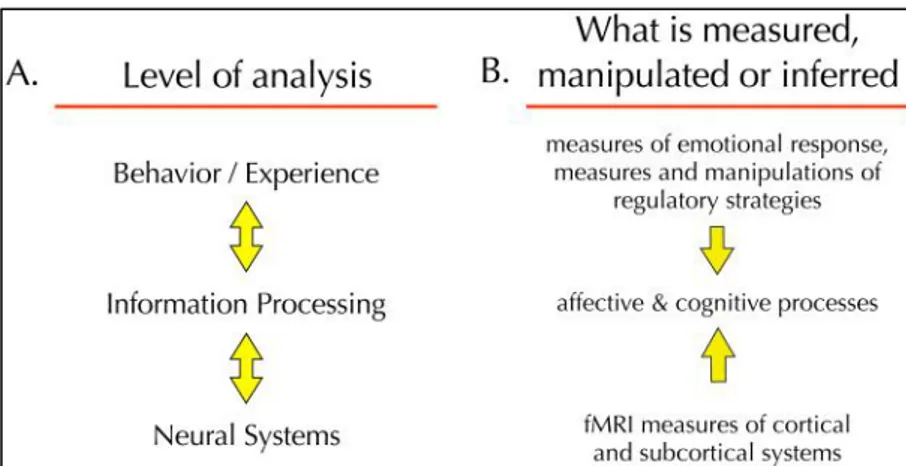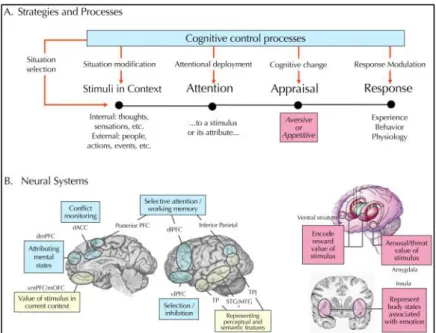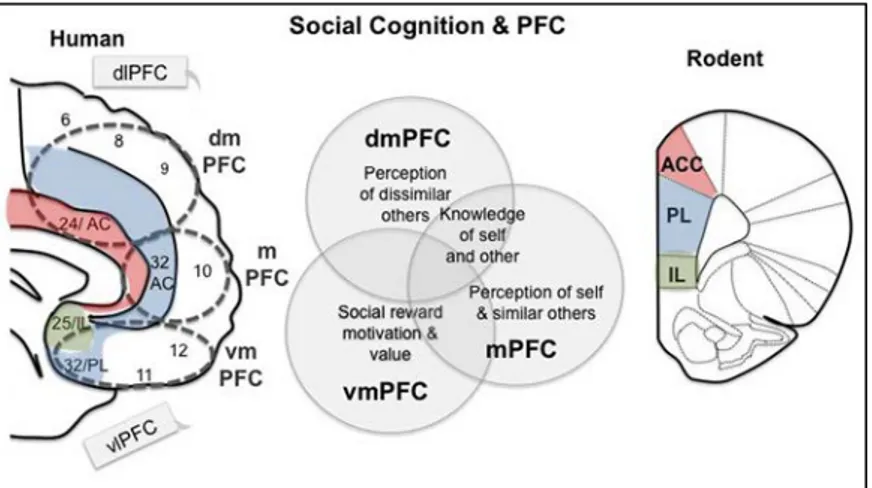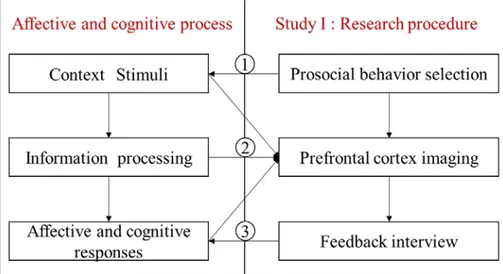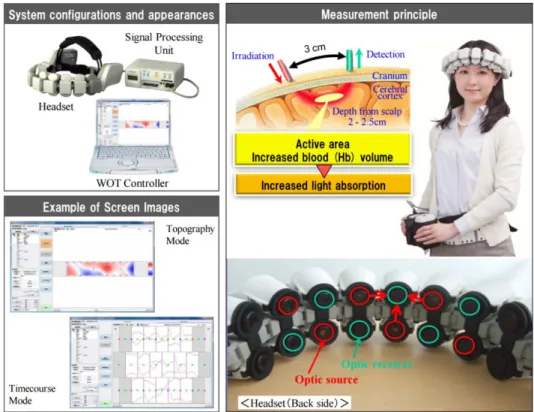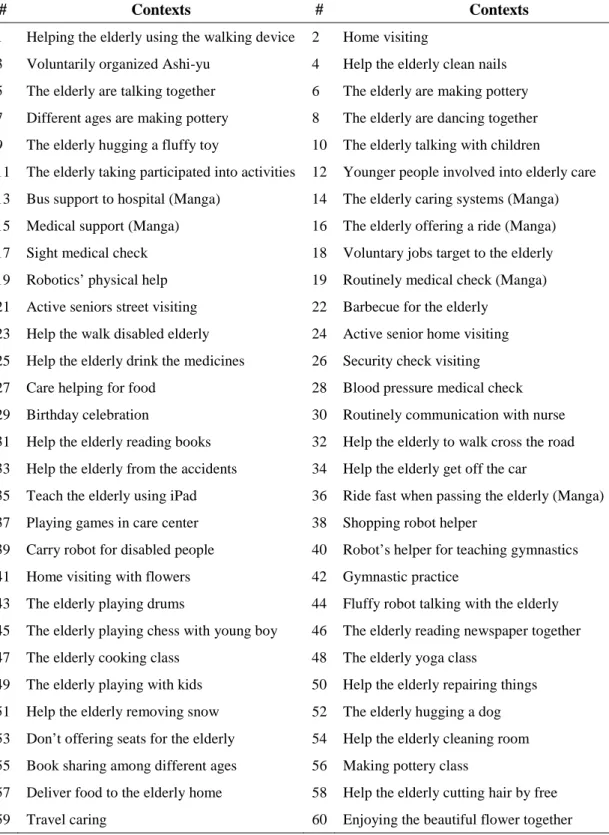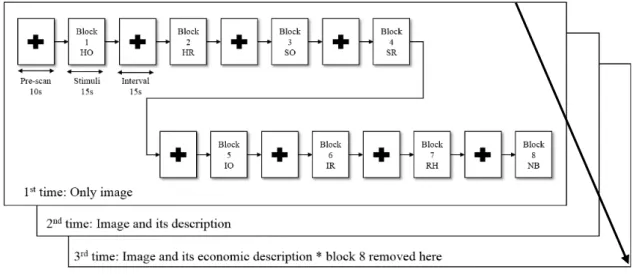Japan Advanced Institute of Science and Technology
JAIST Repository
https://dspace.jaist.ac.jp/
Title
Community-based Service for the Psychological Well-being of the Elderly: Antecedents and Consequences of Prosocial Behavior to Positive Emotion
Author(s) 周, 鵬程
Citation
Issue Date 2017-03
Type Thesis or Dissertation
Text version author
URL http://hdl.handle.net/10119/14126 Rights
Master Thesis
Community-based Service for the Psychological Well-being of the
Elderly: Antecedents and Consequences of Prosocial Behavior to
Positive Emotion
1450205 Pengcheng Zhou
Supervisor: Kunio Shirahada Main Examiner: Kunio Shirahada
Examiners: Michitaka Kosaka Naoshi Uchihira Yasunobu Ito
School of Knowledge Science
Japan Advanced Institute of Science and Technology
i
Community-based Service for the Psychological
Well-being of the Elderly: Antecedents and
Consequences of Prosocial Behavior to Positive
Emotion
Pengcheng Zhou
School of Knowledge Science,
Japan Advanced Institute of Science and Technology
March 2017
Keywords: community, service, prosocial behavior, psychological well-being
In aging background, age-related psychological and social issues have grown into a global concern, abundant researches have pointed out that emotion as the motivation and outcomes for conducting social behavior is significantly penetrated into people’s daily life. Since the elderly in Japan has confronted the loneliness issue which caused by lack of social contact with others in the community they lived in. Addressing to this issue, this research aims to build a model for optimal psychological well-being in community-based service by identifying the impact of prosocial behavior to positive emotion of the elderly.
In order to achieve this goal in a service viewpoint, this research has divided into two studies. In the first study, it aims to identify how the emotion of the elderly get affected by other people’s prosocial behavior and their social preference in different conditions. In this part, the demand of the elderly could be derived from the experiment. The prosocial behavior contexts contained three domains, helping, sharing and informing. All of the context are testified under two conditions (nonmonetary vs monetary; occasional vs routinely) which affect brain-directed decisions differently towards same behavioral content. The experiment was proceeded by using Optical Topography device which using Near Infrared Spectroscopy technology to measure the brain activities of the elderly in the prefrontal cortex through
ii
iii
associated with prosocial behavior stimulus and a semi-structured interview conducted afterwards.
According to the interpretation of study I results, the prosocial behavior characteristics, helping behavior that release the elderly physical burden, sharing behavior of working with a same goal, informing behavior of expressing the thank and caring feelings left good impression to the elderly. Therefore, the second study designed a community event working with the local organization and community for experimenting and investigating how to apply prosocial behavior characteristics to the community-based service. Helping behavior implied as help to find the charming of the community, sharing as share knowledge during interaction, informing as sending thank message with each other. All characters designed in a strolling activity which fit for the insufficiency of current community activity design. For collecting data, it is combined with the observation and the questionnaire survey, which including the motivation of their participation and the satisfaction about each of the segment design in the event.
The results indicate that prosocial behavior is sufficiently affect the elderly people’s affection. Although different prosocial behavior context could evoke the elderly’s positive emotion in different degrees, well-applying the prosocial behavior contributes to the community-based service design and service co-creation process significantly. For a prosocial behavior context applied community-based service, not only the elderly but also some other younger age groups sensed the accomplishment and enjoyment from the event.
Combining the two studies, a community-based service model proposed according to the steps of the provider’s strategy, the mental statement changes of the recipients and the co-creation process. Moreover, based on the interpretation about the whole research, the community-based service and the psychological well-being definition has been given. Although, this research specifically identified in the prosocial behavior context, the proposed model could be applied in other context also. Well-applying this community-based service model will boost the social connection among the service provider, local residents and community they lived in.
iv Copyright Ⓒ 2017 by Pengcheng Zhou
i
Contents
Chapter 1:Introduction ... 1 1.1 Research Background ... 1 1.2 Research Questions ... 4 1.3 Research Methodology ... 5 1.4 Structure of this study ... 6Chapter 2:Literature Review ... 8 2.1 Psychological Viewpoint ... 8 2.1.1 Loneliness issue ... 8 2.1.2 Positive psychology ... 11 2.2 Prosocial behavior Viewpoint ... 13 2.2.1 Prosocial behavior concept ... 13 2.2.2 Reciprocity of prosocial behavior and psychology benefits ... 14 2.2.3 Behavior and human perception ... 16 2.3 Neuroscience viewpoint ... 17 2.3.1 Human perception to emotion recognition ... 17 2.3.2 Prefrontal cortex leading human behavior and judgement ... 18 2.3.3 Near-infrared spectroscopy studies to perception identification ... 20 2.4 Service Viewpoint ... 21 2.4.1 Value co-creation process ... 21 2.4.2 Value-in-context and actor roles ... 22 2.4.3 Experience-centric service ... 23 2.4.4 Current community-related service for the elderly ... 24 2.5 Summary ... 26
Chapter 3:Study I: Perception and preference of the elderly to the prosocial behavior in communities ... 27 3.1 Research Sequence ... 27 3.1.1 Research purpose ... 28 3.1.2 Methodology and research procedures ... 29
ii
3.2 Prosocial behavior selection ... 31 3.2.1 Prosocial behavior characteristics related community activities ... 31 3.2.2 Pre-investigation for behavioral context selection ... 32 3.3 Perception of the elderly to prosocial behavior ... 37 3.3.1 Experiment design for perception identification ... 38 3.3.2 Data analysis ... 39 3.3.3 Comparison of different contexts ... 40 3.3.4 Comparison between monetary and nonmonetary situation ... 43 3.3.5 Autocorrelation coefficient in prefrontal cortex to specific contexts ... 44 3.3.6 Comparison of gender difference ... 45 3.4 Preference analysis ... 48 3.4.1 Feedback Interview ... 48 3.4.2 Interview interpretation based on brain imaging data ... 49 3.5 Summary ... 51
Chapter 4:Study II: Implicative investigation in community activities ... 53 4.1 Current community activity ... 53 4.1.1 Community activity in Nomi city ... 54 4.1.2 Data implication ... 55 4.2 Event design ... 58 4.2.1 Event process and illustration ... 58 4.2.2 Detail selection and prosocial connection ... 60 4.3 Motivation and satisfaction analysis ... 64 4.3.1 Questionnaire setting ... 64 4.3.2 Data Analysis ... 66 4.3.3 Data Interpretation ... 72 4.4 Summary ... 75
Chapter 5: Community-based service model for the psychological well-being of the elderly ... 77
iii
5.1.1 Data interpretation of study I and study II ... 78 5.1.2 Community-based service model ... 80 5.1.3 Community-based service model and social connection ... 87 5.2 Model for psychological well-being of the elderly ... 88 5.2.1 Psychological well-being ... 88 5.2.2 Implication of the psychological well-being ... 89 5.3 Summary ... 91
Chapter 6: Conclusion ... 92 6.1 Answers for research questions ... 92 6.2 Theoretical Implication ... 96 6.3 Practical Implication ... 98 6.4 Limitation and Future research ... 99 Acknowledgements ... 100 References ... 101 Appendix A: Semi-structured interview contents ... 112 Appendix B: Questionnaire for Study II ... 116
iv
List of Figures
Figure 1.1: Research methodology overview ... 5 Figure 1.2: Structure of the study ... 7 Figure 2.1:A 10 year follow up of reported satisfaction with friend contacts, experienced
loneliness, subjective health, having a good friend to talk to, and housing among elderly people, living in a parish of Stockholm (Holman and Furukawa, 2002, pp.270) ... 9 Figure 2.2:Illustration about positive psychology study branches (Graph based on Peterson,
2006, Uno translated, 2010, pp.21) ... 12 Figure 2.3:Illustration of the connection prosocial behavior and psychological benefits . 16 Figure 2.4:A multi-level approach to building model of emotion regulation (Ochsner, Silvers & Buhle, 2012, pp. 30) ... 17 Figure 2.5:A model of the cognitive control of emotion (Ochsner, Silvers & Buhle, 2012, pp. 31) ... 18 Figure 2.6:Prefrontal cortex area illustration ... 19 Figure 2.7:Working model for prefrontal regions involved in social cognition in human and
mouse (Bicks et al., 2015, pp.3) ... 19 Figure 2.8:Expansion of S-D logic by incorporation of social structure and service/social
systems (Edvardsson, Tronvoll & Gruber, 2010, pp.333). ... 22 Figure 2.9:Illustration of the connection among those branches in this study ... 25 Figure 3.1: Research Sequence and branches ... 28 Figure 3.2: Connection of affective and cognitive process to research procedures ... 29 Figure 3.3: Wearable optical topography device working principle ... 30 Figure 3.4: Images depicting prosocial behavior ... 35 Figure 3.5: Illustration from prosocial behavior context to experiment ... 37 Figure 3.6: Flow of the experiment ... 38 Figure 3.7: Definition of four areas consisting of 22 channels while pre-frontal cortex
measurement ... 40 Figure 3.8: Oxygen-hemoglobin (Oxy-Hb) heat mapping and dynamic changes in pre-frontal
cortex activity during stimulation ... 42 Figure 3.9: Line plots for each behavior in nonmonetary and monetary situations ... 44
v
Figure 3.10: Moran’s I results for 22 channels divided into four sections ... 45 Figure 3.11: Average line plots with gender differences ... 47 Figure 4.1: Original map for the strolling activity ... 56 Figure 4.2: Event process (start from the bottom with the symbol of ○) ... 59 Figure 4.3: Applied map, route and assigned places ... 61 Figure 4.4: Puzzles applied picture of two routes ... 62 Figure 4.5: Bookmarker design ... 63 Figure 5.1: Research sequence and data interpretation ... 79 Figure 5.2: Community-based service model for the elderly’s psychological well-being ... 81 Figure 5.3 Connection between recipient and provider in the community-based service model
vi
List of Tables
Table 3.1: Pre-investigated prosocial context... 33 Table 3.2: Description about image ... 36 Table 3.3: Age and gender information of participants ... 39 Table 3.4: Interview Contents ... 48 Table 3.5: Subjective ranking results ... 49 Table 4.1: Questionnaire key points ... 66 Table 4.2: Basic information of the participants ... 67 Table 4.3: The motivation Statistics ... 67 Table 4.4: The Satisfaction Statistics ... 68 Table 4.5: Means and Standard Deviations by Key Motivations ... 69 Table 4.6: Factor analysis of satisfaction items ... 70 Table 4.7: Satisfaction variable correlation matrix ... 71 Table 5.1: Details and implication of Community-based service model ... 84
Chapter 1:Introduction
1.1 Research Background
In 21st century, aging has become a global issue in sociology and economics, the various services and products has aiming their target to the seniors in the society. Currently Japanese age ratio has reached the first place among the world and the aging rate has kept growing. In 50 years, it's estimated by the government that 40% of Japan's population will be over 65 (World Population Review, 2015). Issues that concern about the life quality of the elderly has risen government attention. While quality of life has diverted into objective and subjective indicators in multi-disciplinary studies, health-related issues developed into a great concern (Bottomley, 2002).
For health-related issue of the elderly, Japanese Ministry of Health Labor and Welfare has carried long-term care: providing several care services for the elder people in a long period. Including in-home services, facility services, preventive long-term care services,
comprehensive services for long-term care prevention/daily life support, community-based services and community-based preventive long-term care services (Annual Health, 2015,
pp.233). Among all these services that they provided to the elderly, they mainly focused on the physical health caring, such as regular visiting, living assistance and outpatient care. However, recently the psychological issues of the elderly like Kodokushi required to be solved. Therefore, tackling the loneliness issues with providing appropriate social services for the elderly becomes valuable.
2
In the long-term care system, the community-based services are key segments that aiming to support different types of regional activities for the elderly to continue living in their accustomed living area (Annual Health, 2015). As previous research and references stressed that community service is a not-for-pay activity (Giles and Eyler, 1994; Seifer, 1998), residents and local institutions as the key roles in the community supposed to have more value co-creation happened to boost the further development of the community. In early study, community-based services in long-term care system mostly designed for the disabled elderly to offering their physical support (Gaugler et al., 2005). In order to expanding the psychological supports for the elderly, Community-based service, supposed to be generalized into all of the services provided by community members to benefit the public or its institutions. Currently, most of the services in communities used to be provided by the government, they could not take enough care of all the details of the elderly people’s life due to limited resources. Therefore, the involvement of the local community residents spurred a necessity to community-based services.
In social perspective, Japanese communities have provided various social activities for the local residents and the elderly. Activities like volunteer activities, matsuri events, study groups and club activities. Among all these social activities, volunteer is a lead one, combing the characteristics of intrinsic, associative and gratuitous (Odaira, 2012). Getting involved with social activities not only helps people to make social connections but also instills in them a sense of fulfillment and joy (Cattan et al., 2005; Bartlett and DeSteno, 2006). In psychological well-being theory, positive emotions have an important role of optimizing social behavior (Fredrickson, 2001). Moreover, it is thought that the elderly as a whole have a better sense of moral and social norms, which would lead to more prosocial behavior (Warburton and Terry, 2000; Penner et al., 2005). Prosocial behavior identified as “a broad
range of actions intended to benefit one or more people other than oneself” (Batson and
Powell 2003, p.463) has brought the potential to applying prosocial behavior concept into community-based services.
In service viewpoint, Vargo and Lusch has pointed that Service has been identified as a process of value co-creation in 2008. Community-based service as one kind of service, it also aiming to the value co-creation during the process that the elderly participated. While community-based service specified into prosocial behavior characteristics, what process they are been through and what kind of value they are creating has not stressed sufficiently in
3
previous studies. Therefore, it is necessary to know what kind of prosocial behavior characteristics are applicable for community-based service for benefitting with psychological well-being.
In psychological viewpoint, Subjective well-being, defined as a person’s cognitive and
affective evaluations of his or her life (Diener, Lucas, & Oshi, 2002, pp. 63). To creating a
high level quality of life, subjective well-being should be effective with economic and social indicators (Diener and Suh, 1998; Diener, Oshi, & Lucas, 2003). Since the well-being contents will be change according to different contexts, the psychological well-being as another interpretation of subjective well-being requires further identification about the cognitive and affective evaluation.
In neuroscience viewpoint, abundant research has identified that the prefrontal cortex of the human brain is responsible for emotion recognition and generation (Aoki et al., 2011; 2013; Ochsner et al., 2012). The prefrontal cortex significantly affects the amygdala and anterior cingulate, parts of the brain that are involved in emotion and empathy generation (Cardinal et al., 2002). Perceived empathy as an emotional state could motivate prosocial behavior as a consequence (Hoffman, 2008). Consequently, the value co-creation process in community-based service could be identified through measuring the brain reaction along with subjective evaluation.
In totally, based on the understanding of developing psychological well-being in community-based service, it is necessary to analysis the elderly people’s perception and preference towards the specific prosocial behavioral context and testified through practical events.
4
1.2 Research Questions
On the basis of the unclear situation of the connection between psychological well-being and community-based service. This study aims to build the model for optimal psychological well-being in community-based service by identifying the impact of prosocial behavior to positive emotion of the elderly. For achieving this goal, a main research question and three subsidiary research questions have raised.
Main research question (MRQ): How does psychological well-being can be perceived for the elderly in community-based service?
Generally, it requires the specific prosocial behavior context in community-based service, how the elderly perceived the context information, what’s their psychological attitude towards these context and the practical application of the context.
Sub research question 1 (SRQ1): How does the elderly affectively and cognitively perceived the prosocial behavior?
In this subsidiary part, the elderly perception to the prosocial behavior context will specified and investigated the detail emotional changes.
Sub research question 2 (SRQ2): How to improve the motivation of the elderly to get involved into community-based service?
After the first question finding some factors that the elderly prefer through the preference to the behavior decision making, combining the previous studies to specified their motivations to involve into the communities.
Sub research question 3 (SRQ3): How to apply the prosocial behavior antecedents and consequences into community-based service for serving the elderly?
Based on the perception and preferences of the elderly towards the specific behavior, the general ideas about how to designing a community-based service will be structured, after that another event will be held to see the practical application of those behavior characteristics, finally to compared the differences and efficiency of prosocial behavior implication in community-based services.
5
1.3 Research Methodology
This research has applied qualitative methodology in general. In order to sufficiently answer the research questions and achieve the goal of this study, it divided into two studies. Figure 1.1 shows the detail information of two studies and methods.
Figure 1.1: Research methodology overview
The first study aiming to identifying the factors of the prosocial behavior that make the elderly people generate positive emotion (feel happy) and also how do they perceived those behavior (prefrontal cortex activation and oxygen-hemoglobin dynamic changes). Therefore, the study I has applied optical topography which is a noninvasive brain imaging method that is able to identify the emotional responses in the prefrontal cortex and effective for measuring the dynamic changes through the time (Aoki et al., 2011; Sato et al., 2011). In the neuro economics and marketing field, optical topography technology has not been highly used yet, however, the advantage of light weight and measurable in the daily-like environment (Pinti et al., 2015) enabled the possible application to this study.
The second study selected the most influential factors from the first study combining the existed community activities, designing some segment details by using the high evaluated prosocial behavior factors to support the shortage of the previous event in the community. After the event, there is a questionnaire survey to the participants to measure their motivation involved into the community and their satisfactions about the contents of every details of the event. During the designing process, this research will also considering the local organizer’s viewpoints to the event design.
Main research question (MRQ): How does psychological well-being can be perceived
for the elderly in community-based service?
Sub research question 1 (SRQ1): How does the elderly affectively and cognitively
perceived the prosocial behavior?
Sub research question 2 (SRQ2): How to improve the motivation of the elderly to get
involved into community-based service?
Sub research question 3 (SRQ3): How to apply the prosocial behavior antecedents and
consequences into community-based service for serving the elderly?
Study I (N=9)
Optical Topography Experiment Semi-structured Interview
Study II (N=16)
Event Questionnaire
6
1.4 Structure of this study
This dissertation contains six main parts which are ‘Introduction’, ‘Literature Review’, ‘Study I’, ‘Study II’, ‘Community-based service’, ‘Conclusion’, all information presented as Figure 1.2. Detail explanation as following:
In chapter 1, the introduction has been given to induce the aging background, aging caused psychological issues that has been paid attention in government community-based service systems. Overviewed the previous studies that related with this issue and the standpoint of this research. From the new viewpoint, research questions and methodology have set up.
In chapter 2, based on the social issue and the research aim, literature reviewed start from psychological viewpoint, prosocial behavior viewpoint, neuroscience viewpoint and service viewpoint, four main aspects. From the psychological viewpoint, various studies focused on the loneliness issue and their proposals in different angles of the elderly people’s life has been reviewed. From the prosocial behavior viewpoint, the deep connection of prosocial behavior and positive emotion generation stated. Moreover, the necessity of quoting prosocial behavior idea into a community-based service design for serving the elderly also narrated. From the neuroscience viewpoint, the study explains the requisition to analyze the emotion changes and perception by brain imaging and how does the brain works for controlling human behavior and emotion. Finally, from a service viewpoint, service, community service and how to design service explained with steps.
In chapter 3, it explains the sequences of the whole research combining the theory supports. Then this chapter explained the specific steps of the study I. Contents including pre-investigation, experiment steps and approaches, data analysis and results. The subsidiary research question one and two discussed in this chapter.
In chapter 4, study II, it explains the application of study I, several investigation and hearing that has held in community meetings. Regarding to the community current issues and combining the characteristics of the prosocial behavior from study I, a mini-case conducted to investigate the implication of the study I to a practical level.
In chapter 5, two studies synthesized into community-based service model, a new interpretation about the community-based service definition. Through the model, it has been explained from a service design process to a practical value co-creation process. From the
7
specific segments and process of the community-based service model, the psychological well-being outputs will be given.
In chapter 6, a conclusion drawn to the contribution and limitations of the research. The research questions are precisely emphasized. Furthermore, a potential implication of this new community-based service is presented in future work profoundly.
Figure 1.2: Structure of the study
Chapter 1: Introduction
Aging background Psychological issue
Community-based service system for assisting the elderly Perception measuring for psychological issue
Chapter 2: Literature Review
Psychological viewpoint Prosocial behavior viewpoint
Neuroscience viewpoint Service viewpoint
Chapter 3: Study I
Perception and preference of the elderly to the prosocial behavior in communities (SRQ1 & SRQ2)
Chapter 4: Study II
Implicative investigation
Application of prosocial behavior characteristics to the community (SRQ2 & SRQ3)
Chapter 5:
Community-based service for the psychological well-being of the elderly (MRQ)
Chapter 6:
Conclusion to the research questions Academic and practical implication
8
Chapter 2:Literature Review
2.1 Psychological Viewpoint
From the aging social issue, this research aiming for contributing the psychological well-being of the elderly. Psychology as a broad approach contains human behavior and mindset, containing the reaction details that human experienced in daily life. The broadened discipline has specified for working the elderly, on the illustration of the psychological issues of the elderly, the current studies’ solutions and the positive psychology three aspects.
2.1.1 Loneliness issue
In Japan, kodokushi, (lonely death) phenomenon among elderly people which is firstly described in the 1980s, has risen public attention since then.1
It’s not only a social issue, it’s also a crisis for the worldwide aging population, because it indicates the elderly people in aging society are facing more psychological issue which need to be solved.
Loneliness is one kind of mental state experienced when the interpersonal relationships divert from their expectation (Peplau and Perlman, 1982). As a mind state has been proven that strongly affected elderly people’s physical health, severe loneliness issue will cause suicide, depression and mental disorder (Fees et al., 1999). From sociology point of
1
Time, 2010, Japan’s “Lonely Deaths”: A business opportunity, last access on Dec. 20th 2016, http://content.time.com/time/world/article/0,8599,1976952,00.html
9
view, predictors of loneliness is not only related with personal psychological statements but also related with family and surroundings, which has more profound influences to elderly people.
Social connection and loneliness issue like the two sides of the coin, neither of the two sides can be separate. Lack of social bonding, such as losing family members or apart from the relatives will bring much more loneliness to the elderly people and loneliness increasing correlated leads to the social isolation (Holmen and Furukawa, 2002). Social network which usually used refer to the social structure made up of several social actors, among the structure, various social interactions will be build. Family kinship is one of the aspect of social network, however with the development of community dwelling, social network among elderly people also get broadened.
Community residents, especially elderly people desired more frequent contacts with friends and people who cannot reached that will get higher levels of loneliness (Bondevik and Skogsstad, 1996). Figure 2.1 presented the study results that Holmen and Furukawa did in 2002, they have specified the social network elements as housing (whether live alone included), satisfied friends to be contacted and good friends to talk everything. The results shows that when the elderly people have satisfied friends to contact with, they will have less loneliness.
Figure 2.1:A 10 year follow up of reported satisfaction with friend contacts, experienced loneliness, subjective health, having a good friend to talk to, and housing among elderly people, living in a parish of Stockholm (Holman and Furukawa, 2002, pp.270)
11
In general, human being as social creatures, just as Maslow has expressed in hierarchy of needs, love and belonging is in the third level beyond the physiological and safety needs. Elderly people facing with age related physical health and losing someone affecting, which leads them more fragile and needy for friends or other people’s caring. Lack of social networks and contact will definitely cause loneliness issue is different degree (Golden et al., 2009; Hughes et al., 2004).
Besides the requirement of having social contact, stress during the social contact becomes another related factor that affect elderly people’s loneliness. Since, in daily life, it’s hard to distinguish the difference of lonely individuals and individuals who don’t feel lonely. In that case, with more social contact the elderly people will feel lonely easily. More importantly, middle-old aged people (around 70) and old-old (80+) have more connect with the lonely individuals than non-lonely persons (Hawkley and Cacioppo, 2007). Insufficient development of social network will trigger a loop of a group of elderly people need to facing the loneliness issue.
Digging the bad effects of lacking social network of the elderly, the various life aspects links to the loneliness issue including the specified contexts and the personalities of different individuals. Considering the loneliness issue solution, affecting factors required further analyses with more predictors such as how the elderly people assesses themselves in the surroundings and their awareness about their needs and wants. Bridging the social network, to let the elderly retained from a positive psychology loop.
2.1.2 Positive psychology
Positive psychology widely applied for developing people subjective experiences, also known as human well-being, which including human satisfaction to the past, enjoyment to the present and expectation to the future (Seligman and Csikszentmihalyi, 2014). In current psychology theories, positive psychology hasn’t well applied in community psychology, which is a key reason that this study has penetrated into (Peterson, 2006). Positive psychology has been proven benefits human motivation, moral virtue cultivation and capability elevation (Sheldon and King, 2001). Based on those psychological benefits, a multiple connections among positive psychology, intrinsic affection and behavior performance could be perceived
12
as Figure 2.2 shows.
Figure 2.2:Illustration about positive psychology study branches (Graph based on Peterson, 2006, Uno translated, 2010, pp.21)
Connection of positive psychology and intrinsic affection mainly reacted in those two aspects. On the one hand, moral virtue, as one of key point in intrinsic affection, collectiveness and compassion is very important in eastern countries. While harmony concept hasn’t been highly emphasized in current studies, the appreciation to other people’s behavior already presented the crucial significance in positive psychology development (Snyder, Lopez & Pedrotti, 2010). Mentioned the appreciation in positive psychology, it also applied into a motivation to highly involved into social activity and provide the benefits to others.
On the other hand, positive emotion like happiness, enjoyment, optimism and sense of accomplishment is another key reciprocal relationship with intrinsic affection. Those positive emotion are good for human physical and psychological health development. Evidence referred that positive emotion highly related with improving human immune systems or increasing the health related information (Richman et al., 2005). For the social loneliness issue in previous session, solving loneliness of the elderly people also connected with improving their positive emotion and life satisfaction (Gruber et al., 2013).
Positive psychology and behavior performance also had a significant meaning. Mainly demonstrate in positive emotions aroused a series of affective circumstances, like conducting more behaviors that benefits others (Fredrickson et al., 2000). At the same time, positive affect also require specific behavioral context to stimulate. Which refers that positive emotion and behavior performance affect each other in some degree (Fredrickson, 2001). However, if the behavioral context is not clear, it will not consequently arouse the positive emotion as the behavioral context supposed to.
13
2.2 Prosocial behavior Viewpoint
Positive emotion and behavior performance has a reciprocal relationship. For solving loneliness issue, Bridging social network and help the elderly generate more positive emotion under specific behavior context support is an essential perspective. Furthermore, bridging social connection and developing interpersonal bonding also explained in many behavioral studies. Especially prosocial behavior committed to the psychological benefits. Therefore, this section will explained the prosocial behavior and standpoint of this study has focused.
2.2.1 Prosocial behavior concept
Prosocial behavior originated with psychology study branches. The development of the prosocial behavior studies has focused on the connection with empathy, which related with the motivation that offering behaviors that benefit others (Eisenberg and Miller, 1987; 1990; Eisenberg, 2003).
Regarding the various interpretation of prosocial behavior. This research has select the definition, “A broad range of actions intended to benefit one or more people other than
oneself - behaviors such as helping, comforting, sharing and cooperating” (Batson, 2003, pp.
463). In 2009, Warneken and Tomasello, proposed three basic aspects of prosocial behavior, helping, sharing, and informing.
Since people who share the same values generate more empathy by acting prosocially (Eisenberg and Miller, 1987; Chow and Chan, 2008), communities that provide places for embedding connectedness and social norms have greater potential to develop prosocial behavior. For applying those prosocial behavior, the implication into social activities supposed to be explored.
Community residents, especially elderly people desired more frequent contacts with friends and people who cannot reached that will get higher levels of loneliness (Bondevik and Skogsstad, 1996). In Holmen and Furukawa research in 2002, they have specified the social network elements as housing (whether live alone included), satisfied friends to be contacted and good friends to talk everything. The results shows that when the elderly people have satisfied friends to contact with, they will have less loneliness.
14
neighborhood and community interaction, and the interactions that happens within neighbors and participation in voluntary activities. The group interventions which is the mostly studied by previous literature has the positive effect to dealing with loneliness issue or social isolation (Cattan et al., 2005; Dickens et al., 2011). The main idea that the intervention groups want to convey is sharing the feelings of loneliness among their friends that same age with them, through the talks, they will perceive one kind of spiritual support from others and it will reduce their feelings about being isolated (Routasalo et al., 2009).
As those mentioned characteristics of current social support and activities, voluntarily, sharing, communication are the key aspects addressed in this issue. Prosocial behavior, also highlight those key aspects should considering those social support and combining the local community situation and provide a good solution to applying prosocial behavior.
2.2.2 Reciprocity of prosocial behavior and psychology benefits
After a previous review about the basic concept of prosocial behavior and the possible implication into community social aspect, we looked into the linkage of prosocial behavior and psychological benefits. Since prosocial behavior could be the potential solution to psychological well-being in community-based service, exactly what kind of psychology benefits could be brought reviewed as following.
Prosocial behavior and psychological benefits are studied in lots of different branches. One way is from prosocial behavior side view, the most famous one is about motivational theory. Prosocial behavior has been studied as an extension of intrinsic motivation. Intrinsic motivation, which is defined as the doing of an activity for its inherent satisfactions rather
than for some separable consequence (Ryan and Deci, 2000 pp.71). Intrinsic motivation has
been mentioned contributed to the creativity (Higgins and Kruglanski, 2000; Elsbach and Hargandon, 2006). The creativity has significance to benefits the community or organization that people in. In 2011, Grant and Berry (pp. 77) has proposed prosocial motivation which
defined as an other-focused psychological process that directs employees’ attention toward others’ perspectives on what is useful, enhancing the impact of intrinsic motivation on creativity.
The benefits of prosocial motivation are not only focused on the people or cooperators but also other people’s behaviors. Moreover, because the relationship context or social context
15
that people involved into also very important (Maner and Gailliot, 2007; Grant and Berry, 2011). While in same community, the moral sense and the context they are sharing are very close, which is very benefit for people engaged. And the prosocial motivation could be generate from seeking for the belongingness or self-esteem.
From psychological benefit side of view, benefits like generate positive emotion is a key aspect. Empathy defined as an affective response that is identical to or very similar to
what another person is feeling or is expected to feel (Spinrad and Eisenberg, 2009, pp. 119).
Empathy also is a bi-beneficial product that people who involved could affectively empathy aroused from the communication or connection. On the other hand, the psychological benefit of prosocial behavior is the happiness that they get from conducting a helping behavior (Aknin, Dunn & Norton, 2012). Organizational commitment to the psychological attachment has been mentioned in the early stage of study (O'Reilly and Chatman, 1986), which is like a combination of belongingness to some organization and the sense of achievement that people get from the activity. They are convertible factors impact on each other.
Mentioned the convertible factors of prosocial behavior and psychological benefits. There is a term, reciprocity, derives from the social norms stands for behavior that people paid for return other people’s kindness or help (Shumaker and Brownell, 1984). In this case, there are two actors which are provider and recipients. Although some research has mentioned such kind of interaction potentially increased the psychological burden to the recipients (Greenberg, 1980), generally the recipients and providers could gain the benefits in different degree. The connection between prosocial behavior and psychological benefits summarized based on previous literature are presented like Figure 2.3:
From behavior actor Prosocial behavior Psychological benefit Motivation Prosocial motivation 1 2 Empathy From behavior or recipient actor Happiness & attachment
1
2 Reciprocity
Social belongingness
Interaction between provider and recipient
16
Figure 2.3:Illustration of the connection prosocial behavior and psychological benefits 2.2.3 Behavior and human perception
As we mentioned before, the motivation of human conducting prosocial behavior, empathy in psychological aspect are the key points in providing a prosocial behavior positive loop. No matter how much the emotion and motivation are connected together, they are all based on the neurochemical systems (Buck, 1985). The effect of affection and cognition are related with how does human perceived that and what kind of judgement people made afterwards. The neural system in human brain has a complex system. Human brain required a specific context to arise their affection cognition (Lang, Badley & Cuthbert, 1998)
Besides the affective cognition about the human behavior, previous research also mentioned that human brain could have a great potential to observing other people’s actions which are greatly connected to their social judgment and conducting same or similar behavior, so called mimicry (Van et al., 2004). It enlarged the possibility to study prosocial behavior, reciprocity in social contexts and activities.
All in all, in this section, we has discussed the multiple connection between prosocial behavior, psychological benefits, motivation and the connection with human perception. As for the specific brain section and the functions that related with psychology and behavioral science we will further interpretation in next section.
17
2.3 Neuroscience viewpoint
After the deep appealing relationship of prosocial behavior and psychological benefits, we could find that prosocial behavior could be a good solution to solve the lack of social connection caused social networking issue. Moreover, previous researches also have mentioned if the positive emotions and the behavior reaction should be controlled in specific contexts. According how to measuring the psychological changes. Studies in neuroscience has given previous support and explanation.
2.3.1 Human perception to emotion recognition
Emotion recognition has several type of ways to express, such as facial recognition, expression recognition, visual and auditory. The current studies also pointed out that in human brain there are lots of area correlates to emotion recognition, such as amygdala, orbitofrontal cortex and right parietal cortices (Adolphs, 2002). Human brain as the highest controlling system, regard as the basic study to identify how does human perceive other people’s reaction and emotion, at the mean time it is significant related with how people decide to involve into social activities or communication.
In 2012, Ochsner, Silvers and Buhle have proposed a model of cognitive control of emotion. It provides a very clear and important theory of the multilevel of how people perceived the tasks and regulate the emotion. Figure 2.4 represents the multilevel approaches and Figure 2.5 demonstrates the model of cognitive control in human brain.
Figure 2.4:A multi-level approach to building model of emotion regulation (Ochsner, Silvers & Buhle, 2012, pp. 30)
18
Figure 2.5:A model of the cognitive control of emotion (Ochsner, Silvers & Buhle, 2012, pp. 31)
From the two figures we could find out that cognitive control system require they had some experience first, which is they need to take part into some social activities and they generate some feedback or evaluation towards their experiences in the neural systems. Through that way, they get the responses and decision making to other people or to themselves. While the brain functioning the emotion regulation, they also start from a cognition to the social contexts and rising their attention. In the model, we could notice the most of the functioning job happened in human prefrontal cortices. Thus prefrontal cortex probably more related with the issue that this research want to solve.
2.3.2 Prefrontal cortex leading human behavior and judgement
Abundant studies also mentioned that the prefrontal cortex of the human brain is responsible for emotion recognition and generation (Aoki et al., 2011; 2013; Ochsner, Silvers, & Buhle, 2012). In particular, the medial prefrontal cortex plays an especially importan role in human emotion processing and behavioral control (Price, Carmichael, & Drevets, 1996; Etkin, Egner & Kalisch, 2011). Furthermore, the prefrontal cortex significantly affects the amygdala and anterior cingulate, parts of the brain that are involved in emotion and empathy generation (Cardinal et al., 2002). Perceived empathy as an emotional state could motivate prosocial behavior as a consequence (Hoffman, 2008).
19
Prefrontal cortex locates at the frontal area of human brain as the figure 2.6 presented. It is highly related with emotional responses, attention and behavior judgement. Medial prefrontal cortex also been tested significant related with self-related information (Gusnard et al., 2001). Specific into this research, while the identification of what perception the elderly has to the social context, self-referred knowledge must be aroused from the prefrontal cortex. The social context contained task used to arise their attention first and then after the information processing, the judgment of how to conduct the behavior and reaction consisted in the prefrontal cortex.
Figure 2.6:Prefrontal cortex area illustration 2
As for the relationship between prefrontal cortex and social cognition, the studies have further interpretation. Prefrontal cortex could be divided into several different sections. In each of them the specific function has some little differences, the details as Figure 2.7 show. In prefrontal cortex, it processing through a perception and reminds of their own experiences and knowledge to help them so the judgment
Figure 2.7:Working model for prefrontal regions involved in social cognition in human and mouse (Bicks et al., 2015, pp.3)
2
20
2.3.3 Near-infrared spectroscopy studies to perception identification
About the human perceptive identification, the most widely used is the magnetic resonance imaging (MRI), which could detect the brain area specifically and tissue active situation (Atkins & Mackiewich, 1998). However in recent studies, functional near-infrared spectroscopy (fNIR or fNIRS), has highly applied to measuring the hemodynamic responses associated with neuron behavior and the blood flow (Strangman et al., 2002; Sato et al., 2013).
Optical topography as a development of fNIRS method, is noninvasive brain imaging that is able to identify the emotional responses in the prefrontal cortex and effective for measuring the dynamic changes through the time (Aoki et al., 2011; Sato et al., 2011). In the neuro economics and marketing field, optical topography technology has not been highly used yet, however, the advantage of light weight and measurable in the daily-like environment enabled the possible application to elderly studies (Pinti et al., 2015).
For this research, the application of optical topography is also a new trial to the social and community service context. The optical topography method used for the whole identification process. As for how this research combined the service concept explained in the next section.
21
2.4 Service Viewpoint
In service science theories, Service-dominant logic is one of the key theory in marketing and neuromarketing about advertising. Recent studies also mentioned that the social service has not been well studied (Anderson et al., 2013). As the psychology and behavior section that been mentioned, community that people are sharing same values are easily to communicate with each other and bridging the social connection. For applying service concept into social services has a significant meaning.
2.4.1 Value co-creation process
Service has been identified as a process of value co-creation (Vargo and Lusch, 2008) and could bring the merits for both the elderly and the communities that they lived in. In 2008, Vargo, Maglio and Akaka (pp.145) has proposed the three viewpoints of service science:
(1) The application of competences (such as knowledge and skills) by one party for the benefit of another, is the underlying basis of exchange
(2) The proper unit of analysis for service-for-service exchange is the service system, which is a configuration of resources (including people, information, and technology) connected to other systems by value propositions.
(3) Service science is the study of service systems and of the co-creation of value within complex configurations of resources.
The three aspects are affecting each other, from exchange to co-creation. Although the current value co-creation are based on three main directions: technology, social organization and business (Spohrer and Maglio, 2008). The value co-creation originally proposed by Vargo and Lusch in 2004, they mentioned the value co-creation happened from both the service provider and customer. Then Grönroos has further discussed that the interaction concept is also taken an important role in value co-creation. The interaction happens in a multiple or reciprocal actions (Grönroos, 2011).
In this research, the value co-creation happened in multiple levels, partially as Figure 2.3 illustrated, in different layers the actor or provider role is changeable. Moreover, while we stand on the social service point of view, the provider and customers’ role will have some change. The changes also depend on the social service context they’ve been through.
22
2.4.2 Value-in-context and actor roles
Value-in-context is a key concept in value co-creation, each single changes of context will affect who will be involved into the service, what service supposed to be well provide and what values they created (Chandler and Vargo, 2011). Both of Vargo and Grönroos have mentioned that while the value co-creation process in a service, resources required to be integrated into the process. In a community context, the resources required lots of layers. Such as the support from the government, the human resources and even the cooperation with other companies or third parties. And in 2008 specifically, Vargo and Lusch have modified rge foundational premise (FP) 9 (pp.8) from Organizations exist to integrate and transform
microspecialized competences into complex services that are demanded in the marketplace
into all social and economic actors are resource integrators. Moreover, the new one FP10 (pp.9) was defined as Value is always uniquely and phenomenologically determined by the
beneficiary.3 Form the changes towards value and the expansion to social service,
value-in-context gained more potential to the community-based service development.
Mentioned social service, the concept about social construction in service field need to be reviewed. In a social system, the interaction and interpersonal relationship development reshaped the actor roles in exchanging service to create better values (Edvardsson, Tronvoll & Gruber, 2010). As the figure 2.8 shows, it is developed from 2009 Vargo proposed the contextual nature of value co-creation, which relationship in the service system has risen public attention.
Figure 2.8:Expansion of S-D logic by incorporation of social structure and service/social systems (Edvardsson, Tronvoll & Gruber, 2010, pp.333)
3
In 2004 and 2006, Vargo and Lusch originated brought up the definitions about foundational premise. The FP9 was revised and FP10 was added in 2008 literature
23
As previous study brought up, the value-in-social-context has lot of propositions, in each of them, the actor or people who involved into the relationship transformed by phases. For which this research tried a multiple level to appealing the issue and propose an appropriate theory. In the first study, affective and cognitive process require the elderly taking more reviver roles and co-created the value which is the prosocial behavior characteristics with experimenter. In the second study, during a service process the elderly are taking role more closely to an actor, affecting each other in different segments.
2.4.3 Experience-centric service
Experience in service defined as“An experience occurs when a customer has any
sensation or knowledge acquisition resulting from some level of interaction with different elements of a context created by a service provider. Successful experiences are those that the customer finds unique, memorable and sustainable over time, would want to repeat and build upon, and enthusiastically promotes via word of mouth.”(Voss, Roth & Chase, 2008, pp.249).
The experience-centric service require the service provider could focusing providing experiences to the customers and at the same time to generate some emotional connection with the customers.
As an extension of value in context, experience in service also significantly related with how smooth the co-creation made among people involved into services (Helkkula, Kelleher & Pihlström, 2012). In which case, while people are experiencing same circumstances and sharing same knowledge and norms, it could be a guarantee that the communication and co-creation process will proceed better. During the co-creation, more emotional attachment will be brought up.
The experience-centric service is more like a service process that people cooperation or interact with each other. Through the process new values co-created (Prahalad and Ramaswamy, 2003). Since the experiences in services could not be easily designed for the customers, we need a further basic and objective identification from the customer (Teixeira et al., 2012), which generate the study I and the design for community-based service.
24
2.4.4 Current community-related service for the elderly
As previous research and references stress that community service is a not-for-pay activity, however for the value co-creation between residents and institutions community service supposed to have further development. For which, Community-based service, the services provided by community members including residents and other organizations to benefit the public or its institutions. Although most of the services in communities used to be provided by the government, they could not take enough care of all the aspects of the elderly’ s life due to limited resources. For which,the issue of how to elevate the community members’ involvement into services becomes more important.
In Japanese community where lots of social activities are conducted and elderly persons take important roles either as actors or receivers (Muramatsu and Akiyama, 2011) because of a small population of young persons. Regarding the important roles that the elderly taking in the community and the lack of attention to their psychological health, it is necessary to instill the positive emotions of the elderly in community services by integrating prosocial behaviors. At the same time, positive emotion and prosocial behavior, as correlated factors (Denham, 1986), will boost the level of social connections within the community. Here, identifying which prosocial behaviors impact positively the emotions of the elderly is the key point.
Finally, as the previous study covered, resolving a psychological issue in community-based service covered lots of different aspects and disciplinary. For clear the connection between different subjects, the figure 2.9 presented as following, starting from psychological issue and through identifying the perception and affection towards the prosocial behavior and positive emotion to summarize the characteristics into community-based service design.
25
26
2.5 Summary
This chapter has addressed the social loneliness issue in the aging society. And discussed the negative effects of have a severe loneliness issue. Therefore, in order to give a good solution for this issue and developing our research, we have explored the researches about the reasons caused the loneliness and the significance of resolving this issue by explain the current studies about implying positive emotion into psychological well-being development. Considering psychological well-being requires people get appropriate affective and cognition arousal based on certain social contexts.
Prosocial behavior is a reciprocity relationship, especially empathy will potentially become people’s motivation to conduct behaviors benefit others. Also empathy is a positive emotion related mental statements, will be aroused while people have receive certain prosocial behaviors. Regarding no matter as the conductor of prosocial behavior or the recipients of prosocial behavior, there will be positive emotion generated in different degree. Prosocial behavior antecedents probably going to be one of the solution to the loneliness issue of the elderly.
In order to know if the elderly would be psychologically affect and what kind of affection will occur, we need to identify in prosocial behavior context. Therefore, in brain science, prefrontal cortex which controlled people’s cognition and commanding behavior need to be measured. Comparing with other brain-imaging methods, we have applied wearable optical topography, which has been proved affective to testify emotion related changes and light for the elderly participant to set.
The whole process from social issue to psychological output identification, it supposed to be planned in a service concept, community-based service as the circumstance of all the prosocial behavior conducting and the main target the elderly lived in. Combining the service design could be better apply the prosocial behavior antecedents and consequences. Community-based service provides the experiences to the elderly and let them earn the psychological benefits from the collaborations.
27
Chapter 3:Study I: Perception and preference of the elderly to the
prosocial behavior in communities
3.1 Research Sequence
The main idea purpose of this research is to identify what prosocial behavior could applied into community-based service, and in what process how to insert into community-based service. The multiple disciplinary studies are combining into service value co-creation process, the elderly as the main target, involving into the community service from a customer role to an actor role. As Figure 3.1 demonstrated. The research start from a social layer found the gap in an aging society, to solve the loneliness issue, bridging the social connection through a community-based service. While designing the community-based service, prosocial behavior and psychological benefits in a social service view require the brain measurement to identify. Here leads to the first study, the brain measurement to testify the elderly’s affective and cognitive process that the elderly has towards the prosocial behavior contexts. Followed the results from brain measurement, the second study implies to testify the motivation and satisfaction in a practical social activity. Combining the two studies, how to apply the process into community-based service design will be answered.
28
Aging Psychological
Lack of social connection
Community based service for build social connection
Prosocial behavior is a reciprocal action to bridging
social connection and positive emotion Prosocial behavior characteristics identification
from perception and affection Loneliness
Psychological well-being Building social connection
Social Layer
Characteristics application into community-based
social activity design
Study I: Experiment
Motivation and satisfaction analysis
Community-based service design
Study II: Social Experiment
Gap Research Sequence Brain science Positive psychology Prosocial behavior As stimuli Identification Prosocial behavior Motivation Satisfaction 1 2 3 4
Research branches and Theory support
SRQ 1 & 2
SRQ 2 & 3
MRQ
Figure 3.1: Research Sequence and branches
Chapter 3 has stand on the viewpoint of brain measurement to analyze the cognition and affection of the elderly. Based on the identification to summarize and classify the prosocial behavior, applying to the community-based service design theory. Furthermore, this chapter will make a general answer to the SRQ1 and SRQ2. Theoretically, as figure 3.1 shows, the first study mainly focused on the prosocial behavior and psychology aspects by a brain science methodology.
3.1.1 Research purpose
Study I aims to identifying the prosocial behavior affective and cognitive process and characteristics of prosocial behavior and answering the subsidiary research questions (SRQ1): How does the elderly affectively and cognitively perceived the prosocial behavior? To the first research question will be answered from the experiment sequences, and the feedback interviews. Moreover second research question (SRQ2) will be partially answered based on the results from the experiment: How to improve the motivation of the elderly to get involved into community-based service?
Generally, the experiment setting the target as the elderly people aged over 60 either in the pre-investigation stage or the experiment stage. And experiment setting not only from the prosocial behavior viewpoint but also from a service viewpoint, while the elderly regard as
29
the service recipients. How does they feel and what their requirement or expectation from the providers.
3.1.2 Methodology and research procedures
Affective and cognitive process require a stimuli with context to rise people attention, while the brain processing the information they got the participants’ attention aroused and the brain functioning into a response, including behavior judgment or emotion generation (Ochsner, Silver & Buhle, 2012). Because it is a complex process, the research procedures presented like Figure 3.2. Firstly, appropriate context stimuli require to be selected from the prosocial behavior context. Secondly, followed with the context stimulus, this is the key step in the study I, prefrontal cortex which is significantly related with human perception and the temporal memory working tasks (Cardinal et al., 2002). Through a multiple tasks, the changes happens in the prefrontal cortex will be observed. After the brain measurement, the last step is the feedback interview, the subjective explanations from the participant will support the prefrontal cortex imaging results.
Figure 3.2: Connection of affective and cognitive process to research procedures
From Figure 3.2 step two, brain activity measurement as one of the key segment in the research, it has various kinds of methods to achieve. The top three methods are fictional magnetic resonance imaging (fMRI), magnetoencephalography (MEG) and electroencephalography (EEG)4. However, recent studies, near-infrared spectroscopy (NIRS)
4
Top 3 Devices for Monitoring and Measuring Brain Activity, 2015, last access Dec.26th, https://imotions.com/blog/top-3-devices-measuring-brain-activity/
30
also been widely discussed. It is a spectroscopic measurement method use the near infrared light to detect the neuronal signals and measurements of the hemoglobin dynamic changes (Gratton, et al., 2005). NIRS was regard as a non-invasive method for infants and adults (Chance et al., 1993; Villringer et al., 1993). In this study the elderly people aged over 60 as the research target, a non-invasive method is easily to be accepted.
Optical topography as one of the specific method study I applied, is one of the development from NIRS technology, measuring the oxygenation and the hemoglobin changes in the cortex from the stimuli controlling (Taga et al., 2000; Taga et al., 2003). A wearable optical topography device (WOT-220), developed by Hitachi, Ltd., was used to measure hemodynamic reactivity in the prefrontal cortex and supported by investigating the emotional states and behavioral preferences. The device as Figure 3.35 shows. The device have 22 channels in total, all channels were divided into optic source and optic receiver, through the light radiation, the active section in prefrontal cortex will absorb the radiated light the increasing of blood volume.
Figure 3.3: Wearable optical topography device working principle
5
Hitachi High-technologies Corporation,2001, last access Dec. 26th, http://www.hitachi-hightech.com/products/images/8456/WOT-100_EN.pdf
31
3.2 Prosocial behavior selection
A lot of prosocial behavior prior researchers have shown that it has many different types and that each of these types pf prosocial behaviors has different personal and situational correlates. (Carlo and Randall, 2002) Among all these researches, altruistic prosocial behaviors were defined as voluntary helping motivated primarily by concern for the needs and welfare of another, often induced by sympathy responding and internalized norms/principles consistent with helping others (Eisenberg et al.,1998; Carlo et al.,2003) Altruistic behavior is positively related to the individual’s level of empathic responding (i.e., responding to another’s emotional state or condition with an emotional reaction congruent with that of the other) or sympathetic responding (i.e., responding to another’s emotion or condition with other-oriented concern).
Prosocial behavior has defined in lots of branches, In 2009 Warneken and Tomasello (pp.397), who proposed three basic aspects of prosocial behavior, helping, sharing, and informing, and the prosocial behavior specified as following:
Helping as helping others achieve their goal by acting for them. Sharing to be sharing valuable goods or services with other people. 6 Informing to be informing others of things they want to know.
In the three aspects, the research looked into the local community activities in japan. The activity require to fit in helping, sharing or informing three aspects. The activities also need to have the elderly participated or as the recipient in the social service. The local activities either received good report in the website or news or the activities are the occasionally happens in the local communities.
3.2.1 Prosocial behavior characteristics related community activities
Japanese communities have lots of social activities that has such kind of prosocial characteristics. According the Mizuho Information & Research Institute report in 2012. Japanese social service support including support the elderly people’s in daily life, such as shopping, outgoing or go to hospital. There are also some service like rising the frequencies of
32
the elderly are meeting their friends.7 Moreover, as Japan Federation of Senior Citizens Clubs report, the community activities received great feedback which are the active seniors are helping each other for the chorus like changing bulbs, repairing plump. Other activities like farming together, strolling activities.8
From all of the activities, we could find that in communities, the elderly has taking important roles and most of the activities are related with the prosocial characteristics, which are helping each other, sharing knowledge or communications and informing about the activity information such as they invite their friends to join the activities that they also interested.
Considering the characteristics and the current community activities, the first study start from conducting pre-investigation to the prosocial behavior that has community contexts or social service background. And all the community activities has the elderly as either service receiver or actor. The prosocial characteristic mainly focused on that the elderly involved into the activities actively or potentially developed actively.
3.2.2 Pre-investigation for behavioral context selection
To select representative images related to prosocial behavior, we looked the current community activities that fitting prosocial characteristics. Randomly selected sixty pictures that indicated prosocial behaviors in local community activities (i.e., talking with elderly people, and teaching the elderly how to use an iPad) as Table 3.1 presented. In order to keep the variety of the prosocial behavioral context, the selected prosocial behavioral contexts including animals, robots and human three aspects interaction, at the same time the age layer, pictures including interaction between the elderly and middle ages, interaction between the elderly and children and interaction among the elderly. From the representing method, information also included some manga made contents to check whether the elderly preferences will change or not. As the comparison contents, some examples of non-prosocial behavior also listed.
We randomly selected four elderly people aged over 65 and interviewed them about
7
Mizuho Information & Research Istitute report, 2012, last access Dec 26th, https://www.mizuho-ir.co.jp/publication/report/2012/pdf/mhlw_08.pdf
8 Japan Federation of Senior Citizens Clubs report, 2012, last access Dec 26th,
